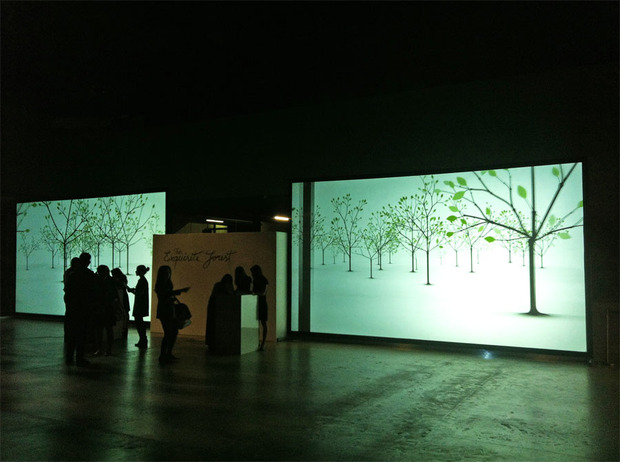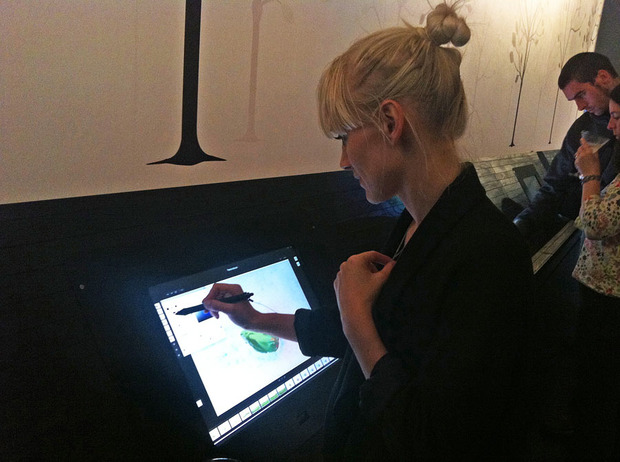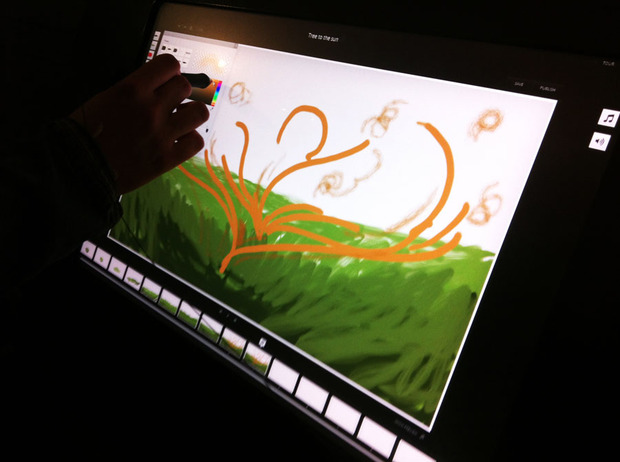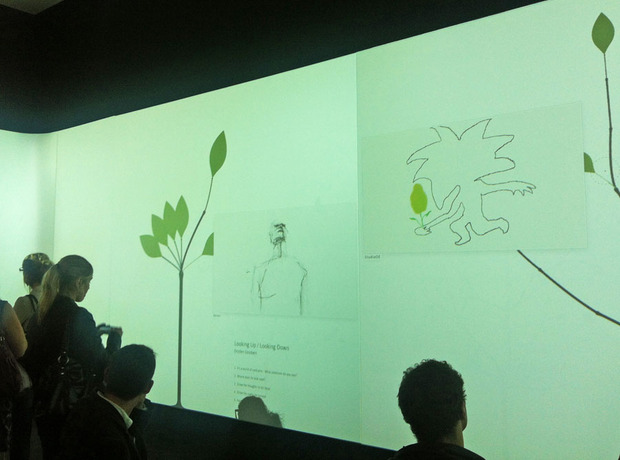This Exquisite Forest
An interactive digital woodland at London’s Tate Modern


Having won the hearts of music fans and artists alike with the wonderful co-creative spirit of “The Johnny Cash Project” and their digitally groundbreaking video for Arcade Fire, “The Wilderness Downtown,” Chris Milk and Aaron Koblin (head of the Data Arts Team at the Google Creative Lab) have joined forces again for a new project called
“This Exquisite Forest.”
Drawing on the overwhelming response they received in the frame-by-frame drawings that created their Johnny Cash video, Milk and Koblin are now broadening the scope of their creative partnership by offering a digital game of consequences to the global online community. This project takes the form of a new web platform where people can evolve each other’s drawings frame-by-frame into new animations.
The title of the project is inspired by the Surrealists’ game of consequences, called “The Exquisite Corpse.” Suitably, this week’s project launch was hosted by Tate Modern in London, in a gallery filled with 20th-century masterpieces. A large interactive screen in an annex of the gallery allowed visitors to navigate “This Exquisite Forest” with a handheld laser device, which, when pointed at the wall, triggered new animations to spring forth from the branches and leaves of the trees.

The initial seeds of the project have been sown by eight artists chosen from the Tate’s own collection. Dryden Goodwin, Olafur Eliasson, Bill Woodrow, Mark Titchner, Julian Opie, Raqib Shaw and Miroslaw Balka have all contributed work, creating an archive of drawings that the public can then appropriate and change according to their own taste. People from around the world can add their drawings online, while London locals can do so in person at the Tate Modern, where a bank of interactive screens are available for visitors to make their creative contributions to the project.
We spoke to Aaron Koblin about having his work in such a prestigious museum and how the project has grown and changed with the involvement of his collaborator, Chris Milk.
We’re standing in Tate Modern surrounded by Giacometti, Dubuffet and many other amazing artists—how does it feel to have your work in here?
I’m thrilled, this space is amazing. It’s a bit intimidating actually, but it’s a beautiful and wonderful space to be in. We’ve put so much time and effort into putting this project together, so it’s a bit surreal to be standing here and see it finalized and ready for people to do whatever it is that they do with it. It’s an exciting moment. Tomorrow we’ll open up the website and see what people do.

How did this project come to be in Tate Modern? Was the project always destined for this place?
Chris and I worked on a project called “The Johnny Cash Project” a couple of years ago, and in that project we saw people really wanting to express themselves more and take it further. So we thought we should build something that empowers them to explore their creative potential together. And that’s what this project is.
When Jane Burton (Tate Media Creative Director) reached out to us shortly afterwards and asked what we could do together with the Tate, then we knew this was a great opportunity to let people express and explore in a totally different way. To see what happens when you use the internet to allow them to connect in a way that I don’t think people have in the past. Random strangers exploring ideas in a really visual way.
Is this the first time you guys have collaborated on a physical installation as well as a digital platform?
I guess it is. I have unofficially been involved in some of Chris’s physical installations in the past. I’ve been helping behind the scenes, but this is our first physical collaboration.

How has the creative process been different on this project compared to “The Johnny Cash Project” or the “The Wilderness Downtown?”
This project is more complex in a lot of ways. It’s very open ended so people can really do all kinds of things with it. And it also has this physical component as well as the interactivity. It’s a bit like YouTube combined with Google Docs combined with a social network—it has a lot of aspects to it. So it’s been a different way of thinking and a much bigger experiment.
How has your creative relationship with Chris evolved over the time you’ve been working together?
I think we’ve only gotten better at communicating. There’s very little held back. Which sometimes is brutally honest, but also very valuable and it makes the iteration process very quick. We can openly discuss things and come to conclusions pretty quickly.
Are you always working at a distance from each other or do you get to be the same space sometimes?
Since we’re both in California it’s not too bad. Sometimes Chris drops into San Francisco for the day, or vice versa. We’re in the same time zone so video conferencing is really easy. It’s definitely a less traditional process where we’re not in the same room that often.

How does your role at Google play into your collaborations with Chris? Are they separate endeavours or one in the same?
It’s been an interesting fusion. I think working at Google has been great. They are amazing people with great resources. I’ve been able to use that opportunity to create some pretty exciting art projects. We’ve just been having a lot of fun really. There’s so much cool technology and so many interesting uses for it. So we really experiment with the potential of the web and see if we can’t push these technologies to their limits in weird ways to see what happens. So it’s a pretty dream job, for a nerd who’s into art.









